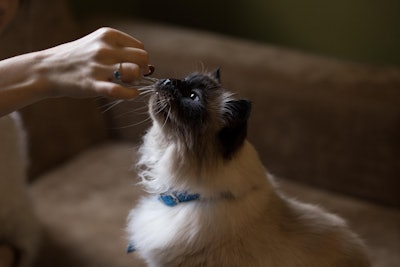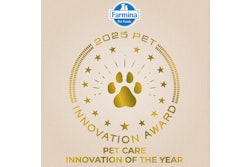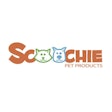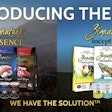
Brandon, an advertising agency for pet care and consumer brands, has unveiled its latest strategic guide: Love-Driven Branding – The New Rules of Pet Care Marketing. The 2025 playbook is designed to explore how emotional intelligence is reshaping how pet care brands must show up, speak up and connect.
The research was conducted among 180 pet parents aged 30-50 with average household incomes of $65,000-$85,000. The research identified three distinct consumer segments: Loyal Realists who stick to familiar brands and price-check consistently; Emotional Optimizers willing to spend more on perceived health benefits; and Curious Pragmatists who research thoroughly before making purchase decisions.
Taste rules the bowl
When it comes to food, pet parents lead with their hearts and their pets’ taste buds, noted the study. It found that 54.4% prioritize taste as the primary factor when selecting pet food, which surpassed both health benefits (45%) and ingredient quality (39.4%).
Cary Murphy, chief strategy officer at Brandon, noted "my pet likes it" beat out "it's good for them." "Pet parents want to feel good and be liked by their pets," said Murphy. "Taste is the shortcut to both."
Traditional dry kibble maintains market dominance with 88.9% buying it, followed by 38.3% for fresh food options, and 28% for home-cooked meals.
Supplement growth continues
Supplement usage shows growth potential, with 44.4% of pet parents already using digestive health products, though they seek simplified messaging and clear usage instructions rather than complex formulations. And don't forget the emotional connection.
"Supplements can be emotional too," said Murphy. "Because wellness is another way we say 'I love you.'"
Some key moves to market a pet supplement include:
- Hero taste: “Delicious daily care” beats “Functional formulation”
- Feature real stories and before/after outcomes
- Demystify usage: clear instructions, fast benefits
Pet care marketing requires an emotional connection
According to Brandon's study, pet care marketing isn’t a facts-first game — it’s a feelings-first journey. While benefits like “all-natural” and “grain-free” matter, they only resonate once the emotional connection is established. The bottom line for pet care marketers, speak to the caregiver, not the customer. That’s where loyalty lives.
Murphy suggested these key moves:
- Use caregiver language: “Because they’re your family” beats “Veterinarian approved”
- Embrace storytelling: Show real moments of joy, healing, and companionship
- Frame purchase as love, not obligation
Trust is also important to these pet parents. It's not seen as a bonus, but the bare minimum. Brands that lead with clarity, not complexity, win trust, said Murphy.
"Safety, wellness, and price — nail all three, or risk losing the cart at checkout," said Murphy. "Brands that keep it simple, honest and dependable don’t just survive the shelf war. They own it."
- 54.4% trust brands they perceive as safe
- 50% prioritize health benefits
- 46.7% still expect affordability
The study suggests successful brands will need to balance emotional messaging with transparent pricing and accessibility, addressing both the deep emotional commitment pet parents feel and the practical financial pressures they face.
Murphy emphasized that effective pet care marketing requires understanding the caregiver mindset: "You're not marketing to a wallet. You're speaking to a heart."
In-store discovery remains dominant
Brandon's research noted that despite industry focus on direct-to-consumer channels, 59.4% of pet parents still discover new products in physical retail locations. To attract consumers in a retail environment, design packaging for human connection, noted Murphy. "The goal is eye contact across the aisle — not clinical confidence," he said.
Other tips for successful packaging: lead with personality-driven design; feature emotional language like "family favorite" or "tail-wagger approved;" prioritize clarity by making ingredients and claims feel transparent, not technical.
"Think of the retail shelf as your first date with the consumer," said Murphy. "Lead with charm, back it with value."
- Build POS displays around pet personas and emotional hooks
- Use signage to educate gently, not overwhelm
- Explain the "why," not jus the "what"
Subscription models don't offer empowerment
According to Brandon's report, only 0.6% of pet owners use subscriptions. Why? Brands selling seamless, automated ease might not understand that most shoppers still want to touch, grab, compare or even ask a cashier what their dog eats.
"Selling convenience is smart," said Murphy. "But assuming they actually use that convenience? That’s the trap."
According to Murphy, pet parents want spontaneity, not automation. Pet care is emotional, and they want to feel in charge, he said.
"If it feels robotic, it fails," said Murphy. "Empower decisions, don’t replace them."
Some examples for an improved subscriber experience:
- Offer customizable, flexible auto-ship with emotional user experience (“Pause for a trip?”)
- Use reminders and behavioral cues, not pressure
- Celebrate freedom; don’t force convenience
Strategic takeaways for pet care marketers
- Emotions drive behavior: Don't lead with features — lead with feeling. Craft messaging that taps the bond, not the benefits.
- Cost = silent guilt: Consumers won't always complain, but they will walk away. Give them affordable options that don't compromise care.
- Shelf presence = conversion: In-store still matters — a lot. Invest in packaging that educates quickly, earns trust and invites touch.
- Trust > trend: This audience sees through the fluff. Build long-term trust with clarity, consistency and proof — not hype.
- Health + happiness = loyalty: Don't stop at "good for them." Wrap your wellness claims in joy, love and everyday moments. That's what keeps pet parents coming back.
The complete Brandon study examined purchasing behaviors, retail preferences, and emotional drivers across multiple pet care categories through late 2024 and early 2025.















